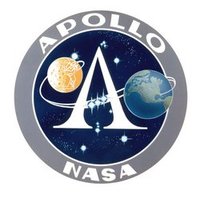AS-202
|
|
| Mission Insignia | |
|---|---|
| Mission Statistics | |
| Mission Name: | Apollo-Saturn 202 |
| Call Sign: | AS-202 |
| Launch: | August 25, 1966 17:15:32 UTC Cape Canaveral Complex 34 |
| Landing: | August 25, 1966 18:48:34 UTC 16° 7' N 168° 54' E |
| Duration: | 1 h 33 min 2 s |
| Number of Orbits: | suborbital |
| Apogee: | 701.3 mi (1,128.6 km) |
| Range: | ~16,000 mi (25,750 km) |
| Mass: | 25809.7 kg |
| AS-201 | |
AS-202 (or SA-202) was a sub-orbital test flight of the Saturn IB and Command and Service Module.
| Contents |
Objectives
AS202_launch.jpg
AS-202 was the second test flight of the Saturn IB. It was designed to test the rocket more than had been done on AS-201 by launching the rocket higher and having the flight lasting twice as long. It would also test the Command and Service Module (CSM-011) by having the engine firing four times during the flight.
The flight was also designed to test out the heat shield by subjecting it to 260 megajoules per square metre. Over the course of the reentry it generated equivalent energy needed to power Los Angeles for over one minute in 1966. The AS-202 reentry produced more energy than the AS-201 as it would follow a shallower reentry profile prolonging the time it was travelling through the atmosphere.
CSM-011 was basically a production model capable of carrying a crew. However it lacked the crew couches and some displays that would be included on later missions for the astronauts. This was the first flight of the guidance and navigation system as well as the fuel cell electrical system.
Flight
The last test flight the Saturn IB launched 25 August, 1966 from Pad 34. The launch phase was perfectly nominal with the first stage burning for just under two and a half minutes lifting the rocket to 56 km in altitude and 56 km downrange from the launch pad. The second stage burned for a further seven and half minutes putting the spacecraft into a ballistic trajectory with a maximum altitude of 216 km.
The CSM was preprogrammed to make four burns of its Service Propulsion System (SPS). The first occurred a couple of second after separation from the S-IVB second stage. It burned for 3 minutes, 35 seconds lifting the spacecraft apogee to 1,128.6 km.
The second burn was 25 minutes later lasting one minute 28 seconds. Two more burns each of three seconds were done ten seconds later to test the rapid restart capabilities of the engine.
As well as testing the SPS, these burns accelerated the spacecraft for a 8900 meters per second reentry. The reentry was a roller coaster like ride, with the spacecraft first dipping down from 122,000 m to 66,000 m. It then lifted back up to 81,000 m. By this time it had shed 1,300 meter/second in speed. It then dipped down for the last time. The main parachutes deployed at 7250 meters in altitude. It splashed-down 370 km from the target landing site and it took the USS Hornet 8 hours and 30 minutes to reach the capsule. The Apollo AS-202 command module landed at 16.12° N - 168.9° E.
Capsule location
The capsule is currently on display on the Hornet. The ship is open to the public as a museum in Alameda, California.
External links
- Postlaunch report for mission AS-202 (Apollo spacecraft 011) - Oct 1966 NASA (PDF format) (http://ntrs.nasa.gov/archive/nasa/casi.ntrs.nasa.gov/19740075039_1974075039.pdf)
- http://nssdc.gsfc.nasa.gov/database/MasterCatalog?sc=APST202
- Moonport: A History of Apollo Launch Facilities and Operations http://www.hq.nasa.gov/office/pao/History/SP-4204/cover.html
- Chariots for Apollo: A History of Manned Lunar Spacecraft http://www.hq.nasa.gov/office/pao/History/SP-4205/cover.html
- AS-202 Press Kit: http://www.apollosaturn.com/as202/as202con.htm

